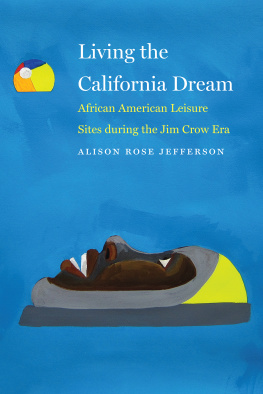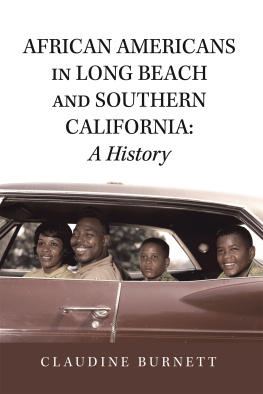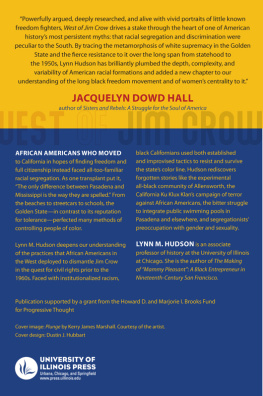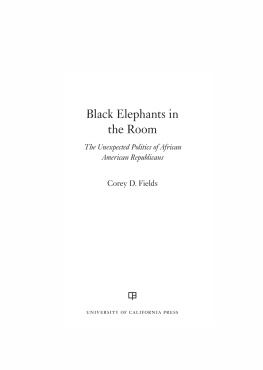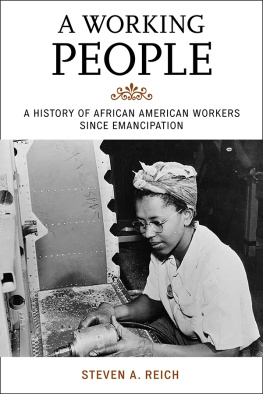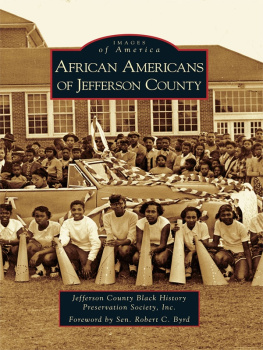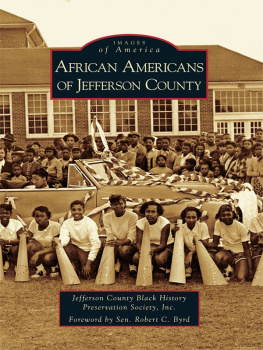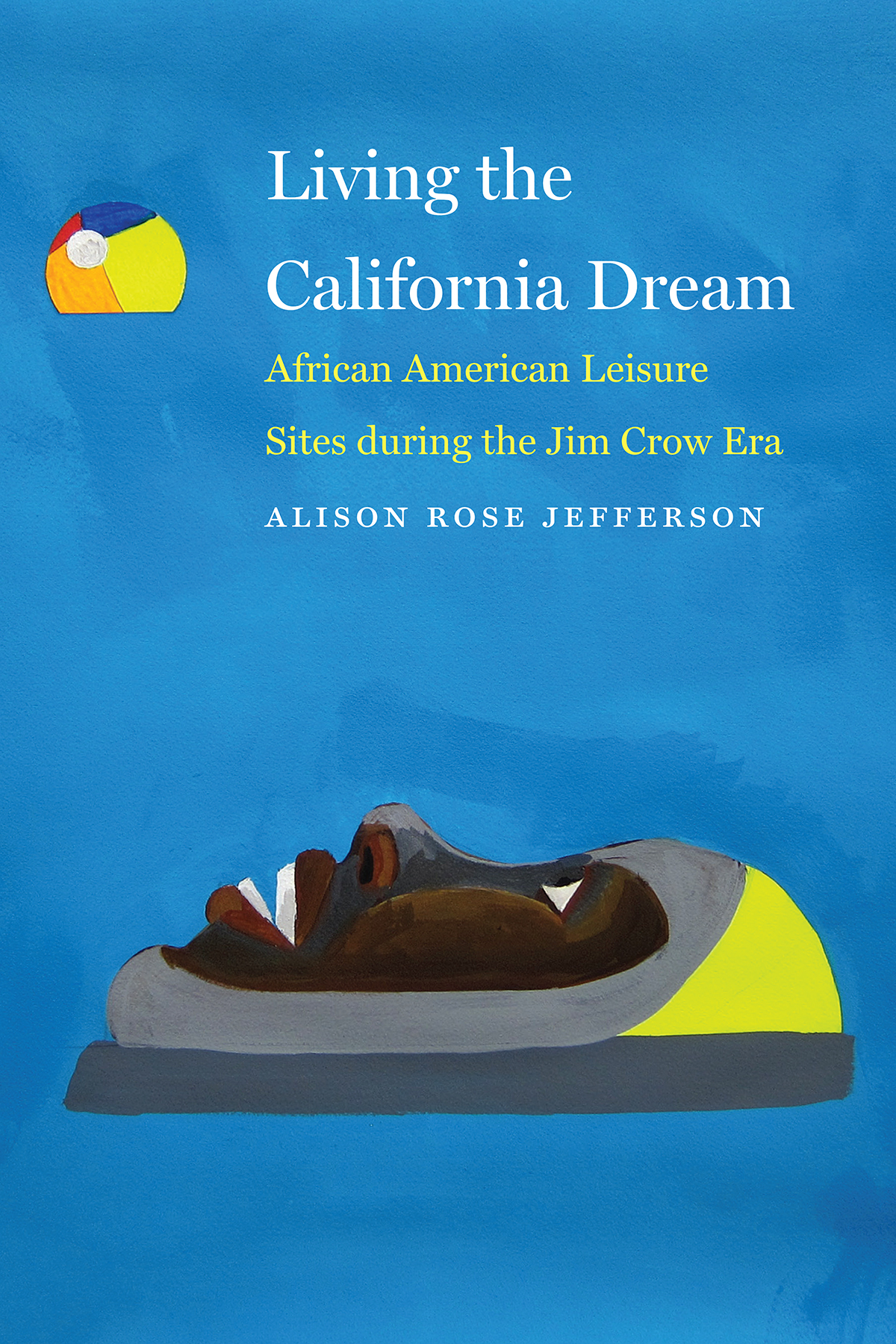
Jefferson brings the multi-decade campaign for black access to leisure areas into the long civil rights movement and reminds us that recreation and racial justice propelled black Southern Californias desire to enjoy the beaches, lakes, and valleys of the region.
Quintard Taylor, Scott and Dorothy Bullitt Professor of American History (emeritus) at the University of Washington, Seattle, and founder of BlackPast.com
This is an important book. It brings to life those Southern California places fundamental to the construction of an African American California Dream. And it does so by thoughtfully considering the lives of those people whose tough struggles for a piece of the California sun were marked by inspirational courage.
William Deverell, director of the HuntingtonUSC Institute on California and the West
In this meticulously researched work of historical reimagining, Jefferson offers a Southern California leisure world of African American place-makers and community builders during the Jim Crow era. Seaside recreation, black-owned businesses, and a refusal to give up. Whats here is new and important.
Krista Comer, professor of English at Rice University and author of Surfer Girls in the New World Order
From Bruce Beach in Manhattan Beach to Eureka Villa in the San Clarita Valley, Jeffersons book unearths a fascinating and forgottenif not willfully obscuredhistory of African American leisure sites in the Golden State. This remarkable study broadens our understanding of black life, leisure, and struggles for integration in early twentieth century California, underlines the complex relationship between the promise of the American West and the realities of Jim Crow, and emphasizes the need to protect more diverse African American sites that have been heretofore underappreciated.
Brent Leggs, executive director of the African American Cultural Heritage Action Fund, National Trust for Historic Preservation
Jeffersons pathbreaking study places African American leisure at the heart of Los Angeles history, African American, urban, and suburban history, and the histories of recreation and Civil Rights, and reclaims their places of leisure, demonstrating why they matter to us all.
Lawrence Culver, author of The Frontier of Leisure: Southern California and the Shaping of Modern America
Alison Jefferson interrogates five sites of memory in Southern California to illuminate how African Americans challenged established racial hierarchies while occupying public spaces and sites of recreation. Jeffersons path-breaking scholarship reclaims these frontiers of leisure and reanimates their contested, hidden histories, locating Black Angelenos in their own pieces of the California Dream. Jeffersons account reveals how de facto Jim Crow operated openly in Californiacontrary to the Golden States popular reputation as an Edenic place of equal opportunity and access.
Anthea M. Hartig, director of the National Museum of American History
Alison Jeffersons important and timely work creatively expands our understanding of the possibilities and limits of the California dream for Black Americans. Jefferson demonstrates how the desire and the struggle to enjoy the leisure opportunities of the region reveals much about how Black Angelenos confronted and struggled against racism that was a painful and resilient as that which they hoped to have left behind when they migrated west in search of the California dream.
Lonnie G. Bunch III, founding director of the National Museum of African American History and Culture and author of Call the Lost Dream Back: Essays on History, Race, and Museums
Living the California Dream
African American Leisure Sites during the Jim Crow Era
Alison Rose Jefferson
University of Nebraska Press | Lincoln
2020 by Alison Rose Jefferson
Cover designed by University of Nebraska Press; Cover painting Derrick Adams.
Author photo Leroy Hamilton.
Portions of this book originally appeared as African American Leisure Space in Santa Monica: The Beach Sometimes Known as Inkwell, 1900s1960s in Southern California Quarterly 91, no. 2 (2009): 15589. Republished with permission of the University of California Press; permission conveyed through Copyright Clearance Center, Inc.
All rights reserved.
Library of Congress Cataloging-in-Publication Data
Names: Jefferson, Alison R., author.
Title: Living the California dream: African American leisure sites during the Jim Crow era / Alison Rose Jefferson.
Description: Lincoln: University of Nebraska Press, 2020 |
Includes bibliographical references and index.
Identifiers: LCCN 2019015601
ISBN 9781496201300 (cloth: alk. paper)
ISBN 9781496219282 (epub)
ISBN 9781496219299 (mobi)
ISBN 9781496219305 (pdf)
Subjects: LCSH : African AmericansRecreationCalifornia, SouthernHistory20th century. | LeisureSocial aspectsCalifornia, SouthernHistory20th century. | ResortsSocial aspectsCalifornia, SouthernHistory20th century. | African American neighborhoodsCalifornia, SouthernHistory20th century. | Discrimination in public accommodationsCalifornia, SouthernHistory20th century. | African AmericansCalifornia, SouthernSocial conditions20th century. | California, SouthernRace relationsHistory20th century.
Classification: LCC E 185.93. C 2 J 44 2020 | DDC 305.896/07307949dc23
LC record available at https://lccn.loc.gov/2019015601
The publisher does not have any control over and does not assume any responsibility for author or third-party websites or their content.
This book is dedicated to my mother, Marcelyn Cobbs Jefferson (192795), and my father, Albert Watts Jefferson Sr. (19182009), and my other ancestors, all of whom provided the foundational support of my lifes journey, this book, and more projects in the future.
Contents
I want to thank everyone who helped me over the years to uncover the stories that this book records. I am especially grateful to all my professors at the University of California, Santa Barbara ( UCSB ), and the University of Southern California ( USC ), who supported and guided me in the production of knowledge to write this manuscript and in my career.
This book would not have become a reality without the women and men, the survivors of the era of my study, telling me the stories of their lives and the lives of others who partook in the experiences and places I have documented. I thank them all for letting me interview them, or for sharing their networks of family and friends and their personal archives with me. I deeply appreciate the time and generosity of Halvor Miller, Esq., and his extended family, George Brown, Arthur and Elizabeth Lewis, Cristyne Lawson, the Ivan J. Houston family, Rick Blocker, Sonya Reese Greenland, Anne Bradford Luke, Harold Peace Jr., Liza Griffith Scruggs, and those who have passed on: the late LeRoy A. Beavers Sr., Anne Smith Cunningham, Navalette Tabor Bailey, and Walter L. Gordon Jr. in assisting me in unearthing and reclaiming these important lost and underrepresented stories to introduce to the academy and the public sphere. I also thank Sandra Seville-Jones and Jan Dennis, residents of the city of Manhattan Beach, for sharing their personal files with me, which held a treasure trove of useful materials, some of which I cite in this book.
Randy Bergstrom guided my doctoral graduate student career at UC Santa Barbara, for which I am deeply thankful. I am also appreciative of the influence that UCSB s Mary Hancock, Paul Spickard, George Lipsitz, Douglas H. Daniels, Patricia Cohen, and the late Clyde Woods (19572011) had on my thinking about the African American experience in Southern California and the West, American history generally, and on my professional career. Darcy Ritzau, the UCSB graduate advisor (for continuing students), was a very helpful administrator during my graduate doctoral student career. Kelly, Regents, and other UC Santa Barbara fellowships supported my dissertation research, which remains important to the present volume.
Next page
